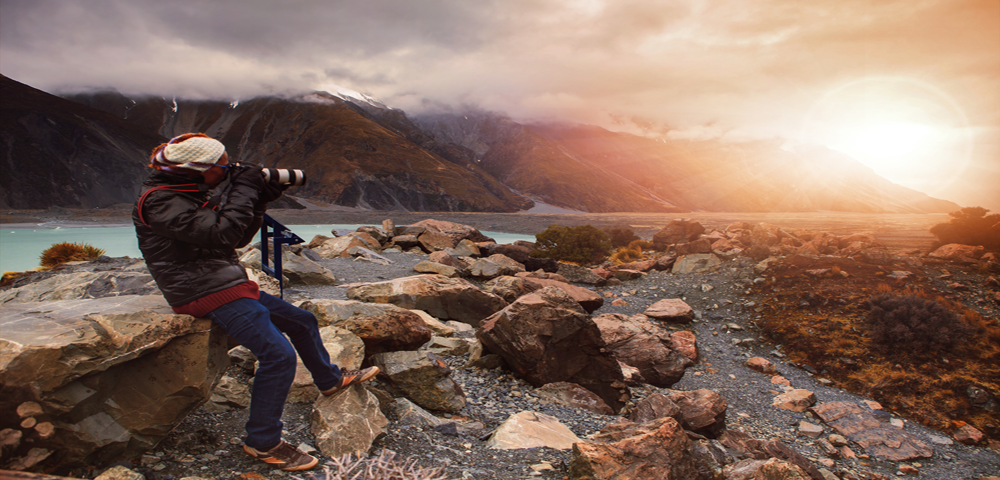Introducing the World of Commercial Photography
The world of commercial photography is undergoing dynamic transformations as new technologies and changing consumer preferences influence the industry. Among the most significant trends seen in 2024 is the shift toward hyperrealism and authenticity. Hyperrealism incorporates advanced techniques to blend photography and painting, capturing ultra-high-definition images with surreal lighting and otherworldly compositions[1]. This artistic approach challenges viewers’ perceptions of reality, blurring the lines between what’s real and what’s imagined.
Authenticity is another driving force in commercial photography, moving in a direction where everyday, real-life scenarios are preferred over staged images[2]. This trend is reflective of a broader societal shift towards inclusivity and diversity, demanding representation that genuinely reflects the varied nuances of human experience. As a result, images now celebrate imperfection and authenticity, which helps brands connect more deeply with their audiences.
Technological advancements also play a crucial role in shaping commercial photography. The integration of artificial intelligence (AI) and machine learning has revolutionized image enhancement and composition techniques[3]. AI tools can now assist photographers in optimizing lighting, framing shots, and even predicting the most visually appealing arrangements. The use of drones has elevated aerial photography, providing unique perspectives and visual diversity that were previously difficult to achieve[4].
The evolution of commercial photography can be traced back to several significant milestones. For instance, the early adoption of photographs by magazines and newspapers in the early 20th century marked a notable departure from using illustrations, making the medium more mainstream[5]. The digital revolution of 1985 was another critical phase that democratized the photography process, allowing for faster, more efficient, and cost-effective photo production and distribution[5:1].
Contemporary commercial photography encompasses a variety of specialized categories, each requiring unique skills and techniques. Types of photos under the commercial umbrella include food, fashion, architecture, headshots, and portrait photography[6]. The diversity within these categories suggests the breadth of commercial photography and its applicability across various industries.
Social media platforms and the rapid growth of e-commerce have significantly influenced current trends. Brands are compelled to produce visually appealing content that stands out in a crowded digital space[7]. This has increased the demand for images that not only highlight products but also tell a story. Minimalist design and the focus on clean, simple compositions have also become prevalent, reflecting a broader aesthetic trend in marketing and advertising[8].
In terms of product photography, there has been a movement towards using natural lighting and reducing digital manipulations to emphasize sustainability. This aligns with growing consumer consciousness around ethical production and environmental responsibility[9]. Immersive experiences using AR (Augmented Reality) and VR (Virtual Reality) are also gaining traction, offering interactive and engaging ways to present products to potential customers[9:1].
Historically, the medium has continually adapted to technological changes and societal shifts. Contemporary commercial photographers must be versatile and well-versed in various disciplines, including digital technology, social media strategies, and traditional photography skills. The combination of these elements is crucial for staying relevant and successful in a competitive industry.
Commercial photography in 2024 is characterised by a blend of hyperrealism, authenticity, and technological integration. As the industry continues to evolve, photographers must adapt to these trends, employing advanced technologies and strategic planning to meet the demands of modern consumers.
The focus on authentic representation, minimalism, and immersive experiences marks a distinct shift in how images are produced and consumed, underscoring the dynamic and ever-evolving nature of this art form.
Citations:
Suggested Reading:
https://www.adobe.com/creativecloud/photography/discover/commercial-photography.html
https://www.contemporaryartissue.com/top-25-fine-art-photography-artists-in-the-world/
https://www.nogin.com/blog/eight-product-photography-trends-to-watch-in-2024/
https://www.fairlicensing.com/en/blog/25-exciting-photography-trends-for-inspiration-in-2024
https://proshotmediagroup.com/blog/history-of-product-photography/
https://www.singulart.com/en/blog/2023/10/11/top-10-most-famous-photographers-of-all-time/
https://news.artnet.com/art-world/artists-take-photography-new-directions-927215
https://theimagecrafters.com/5-trends-revolutionizing-commercial/
https://www.eden-gallery.com/news/what-is-contemporary-photography
https://www.neilboydphotography.tv/blog/2020/4/1/the-evolution-of-commercial-photography
https://www.wanderlustportraits.com/how-photography-changed-the-world/
https://harpercollege.pressbooks.pub/film/chapter/chapter-1/
